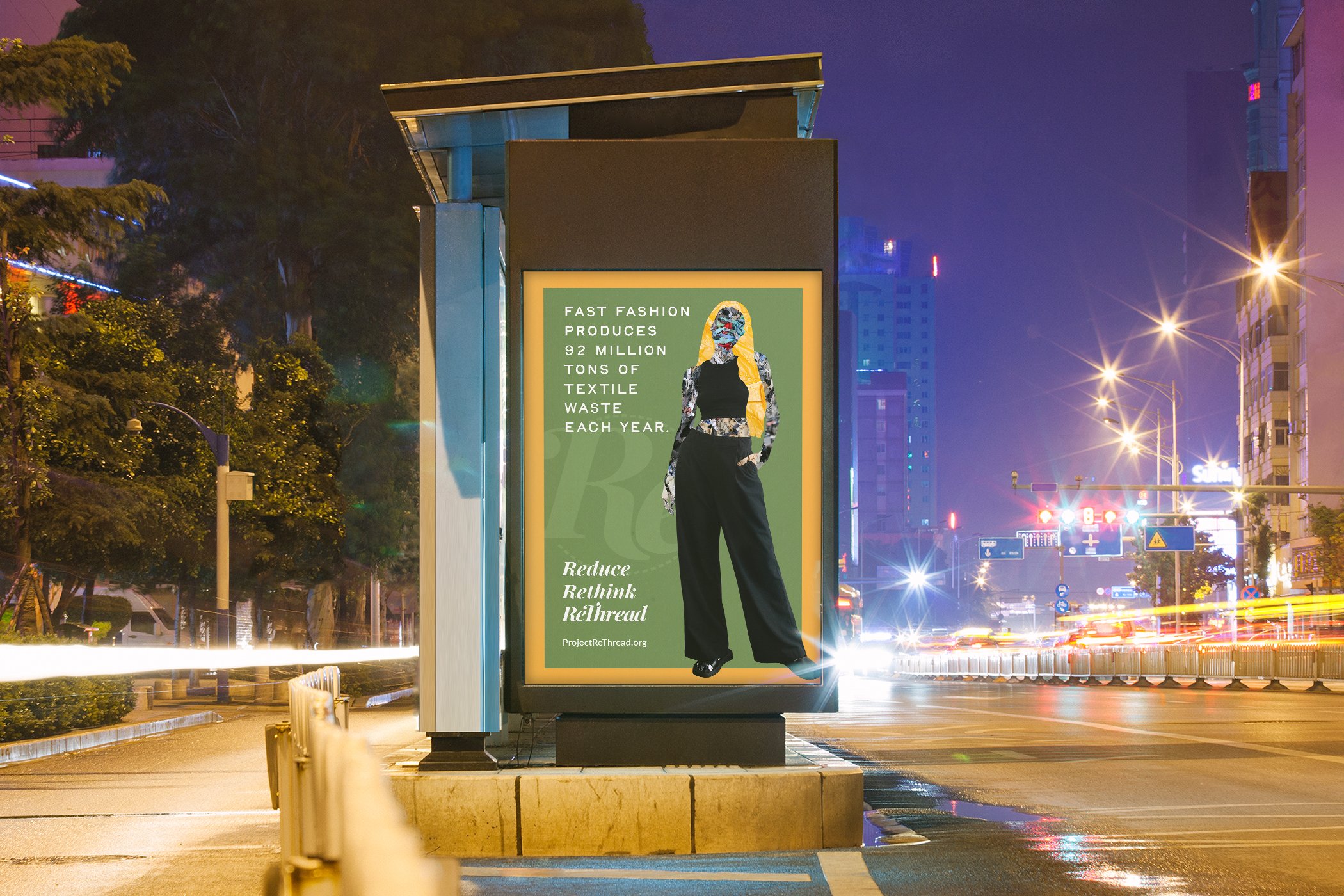Exploring a theoretical solution for fast fashion consumption among Gen Z
Jason Moore • MFA Graphic Design Thesis Project
Liberty University, Summer 2024
WEBSITE (DESKTOP & MOBILE)
The website was one of the most important design components to this project because it is the one place where all other designs point. It serves as a hub of information and action for those inspired to make a change in the way they consume fashion. The final website is constructed of 12 pages, designed for both desktop formats and mobile formats for Gen Z, who is more likely to consume content on a mobile device. The website includes a main home page, about page, sustainable choices page, why does it matter page, a blog, a donation page, and subpages centered around the themes of reusing, thrifted fashion, sustainable brands, the ambassador program, and ways to get involved. The website showcases the same graphic elements as the social and print designs for visual consistency. There are a few elements of the website that are nonfunctional. These elements have been mocked up to show how they will look because I do not have the coding experience to create things like the directory, maps, and donation tools.
SOCIAL MEDIA ASSETS
Instagram
While these designs could be adapted for different social media platforms, I chose to focus heavily on Instagram as a platform that Gen Z widely uses for the purposes of this project. The final design solution consists of an Instagram grid layout and preview, three grid-buster posts, four illustration-based posts, and five photo-based posts, four of which were designed as carousel posts that scroll from left to right on Instagram. Each of these post groups contain different types of content with different goals. These goals are listed with each of the figures referenced on the following pages.
FINAL SOLUTION
BRINGING IT ALL TOGETHER
Everything in this document thus far, from the research to the visual process, has informed and led to a final solution of designs that are both strong in visual aesthetic and strategically intentional in the purpose and mission of Project ReThread. This chapter exhibits the designs in their finalized state from the iterations displayed in the previous chapter.
LOGO & BRAND ASSETS
The Logo & Color Palette
The final logo consists of a primary logo and a brand icon featuring strong typography and a subtle nod to fashion with elements of stitching within the brand marks. The finalized color palette consists of five foundational colors; Green Thread, Sustainable Denim, Reuse Blue, Gen Eco, and New Day. This color palette is successful because it reflects nostalgic and vintage aesthetics, which widely appeals to Gen Z (Armstead). Additionally, it provides plenty of flexibility as will be shown in the secondary color palette and the social and print designs later in this chapter.
BRAND GUIDELINES
The brand guideline book was created as a culmination of all brand elements. This 26-page book was designed to guide all visual brand decisions in digital and print designs. Sections include brand vision & goals, brand tone & keywords, brandmarks, color palette, typography, graphic elements, and photography. Each section provides direction and example for designs that support the vision and mission of Project ReThread.
Brand Tone & Voice
The Project ReThread brand tone plays an important part in communicating to the target audience, Gen Z. The brand tone was developed to be vibrant, authentic, and inclusive, tailored specifically with the target audience in mind. To do this, Project ReThread speaks to this generation of digital natives, embracing their values, passions, and diversity. The tone is conversational, reflecting the way Gen Z communicates effortlessly across various platforms and mediums. Whether the brand is sparking conversations, sharing memes, or taking a stand on social issues when it comes to fast fashion, the tone is always relatable, engaging, and unapologetically Gen Z.
Reels & TikToks
With static Instagram images, there is also the opportunity to show the potential for short-form video-based content on Instagram Reels and TikTok. I designed four video clips that show viewers how to put together and style an outfit using pieces from their wardrobe or a second-hand store. The videos label each outfit with a name and give an easy, three-step guide to making it happen. The content for these videos were based on the static carousel Instagram images. The actual video clips can be viewed below.
Social Media Playbook & Brand Ambassador Playbook
Along with the digital assets, I created a social media playbook and a brand ambassador playbook. These playbooks are meant to be used as guides for content creation and interactions on social media for Project ReThread’s social media team as well as the Brand Ambassadors (influencers) that the brand will have the opportunity to partner with on social media. These playbooks will help create consistency and clarity in the communication from and about Project ReThread on social media platforms.
PRINT ASSETS
Posters & Ads
For the print assets, it was important to think intentionally about where they would be placed so that Gen Z, a primarily digital generation, would see them. For the most part, my print assets are signage and billboards designed for spaces where Gen Z might be – large cities, public spaces, stores, in the car, traveling, etc. I developed two kinds of posters to achieve different goals. The first set is meant to inform and educate with a poster that is bright in color with facts surrounding sustainable fashion. The second set is meant to be more of a model/influencer photoshoot with quippy phrases that will appeal to Gen Z by speaking their language.
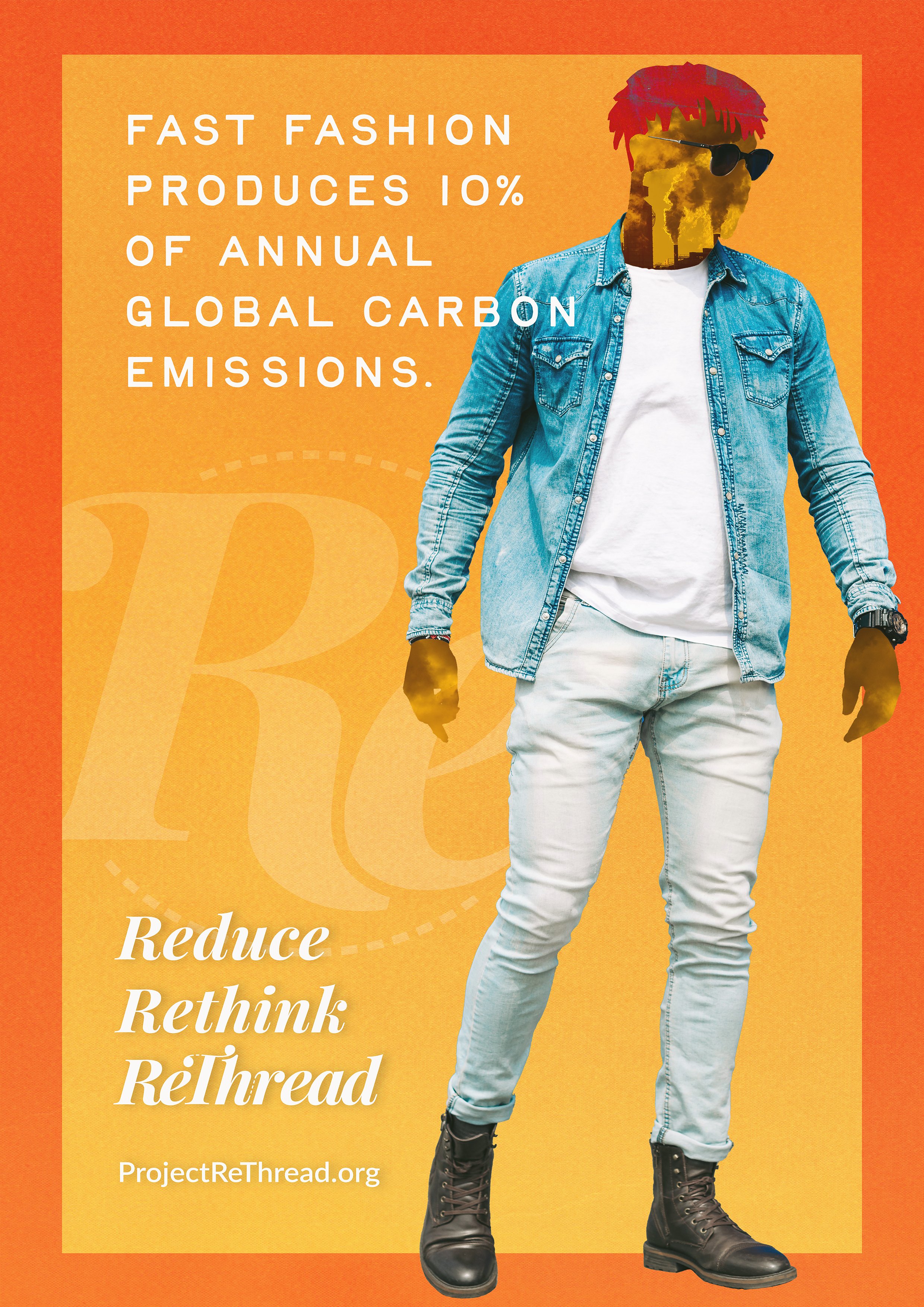

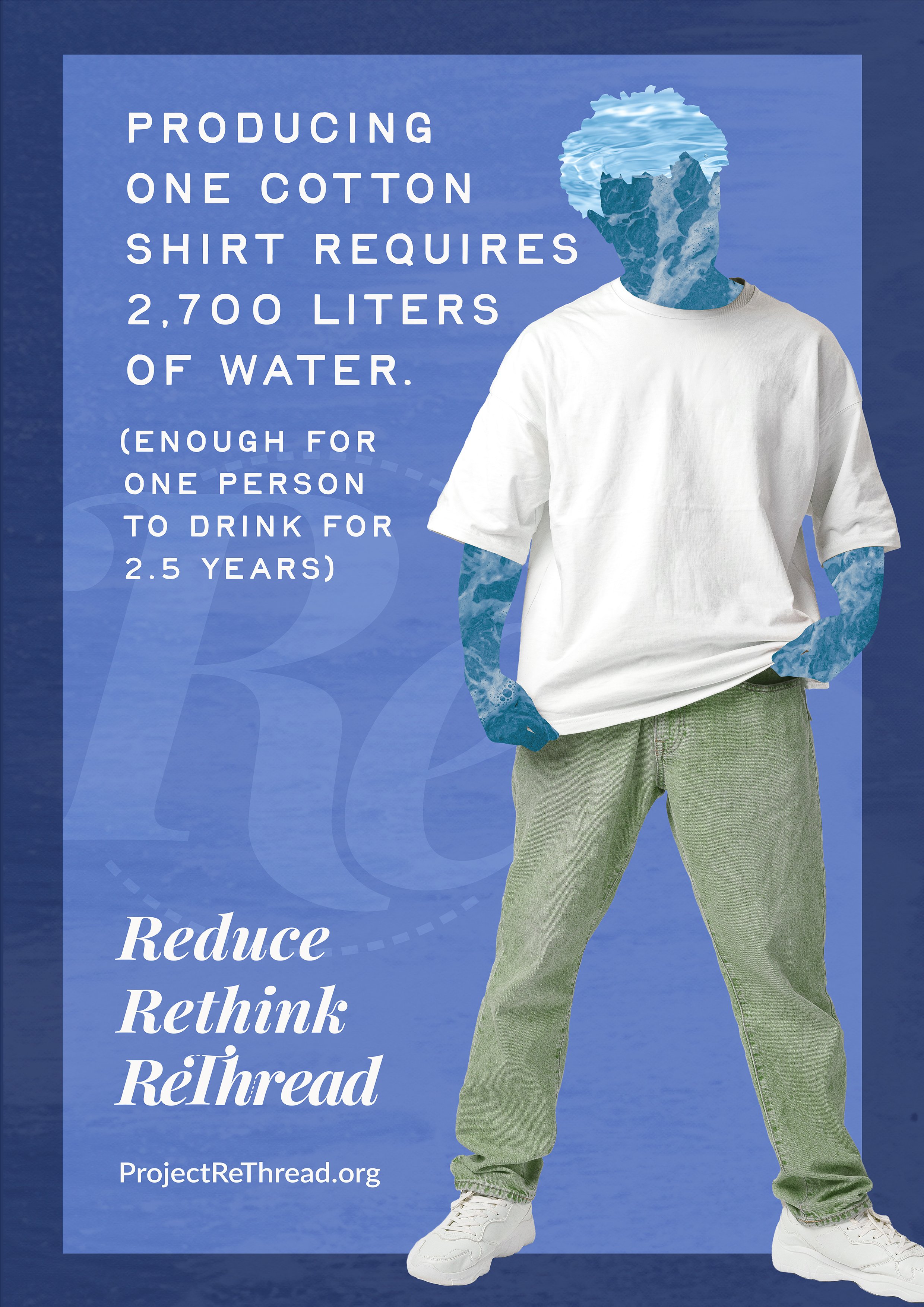
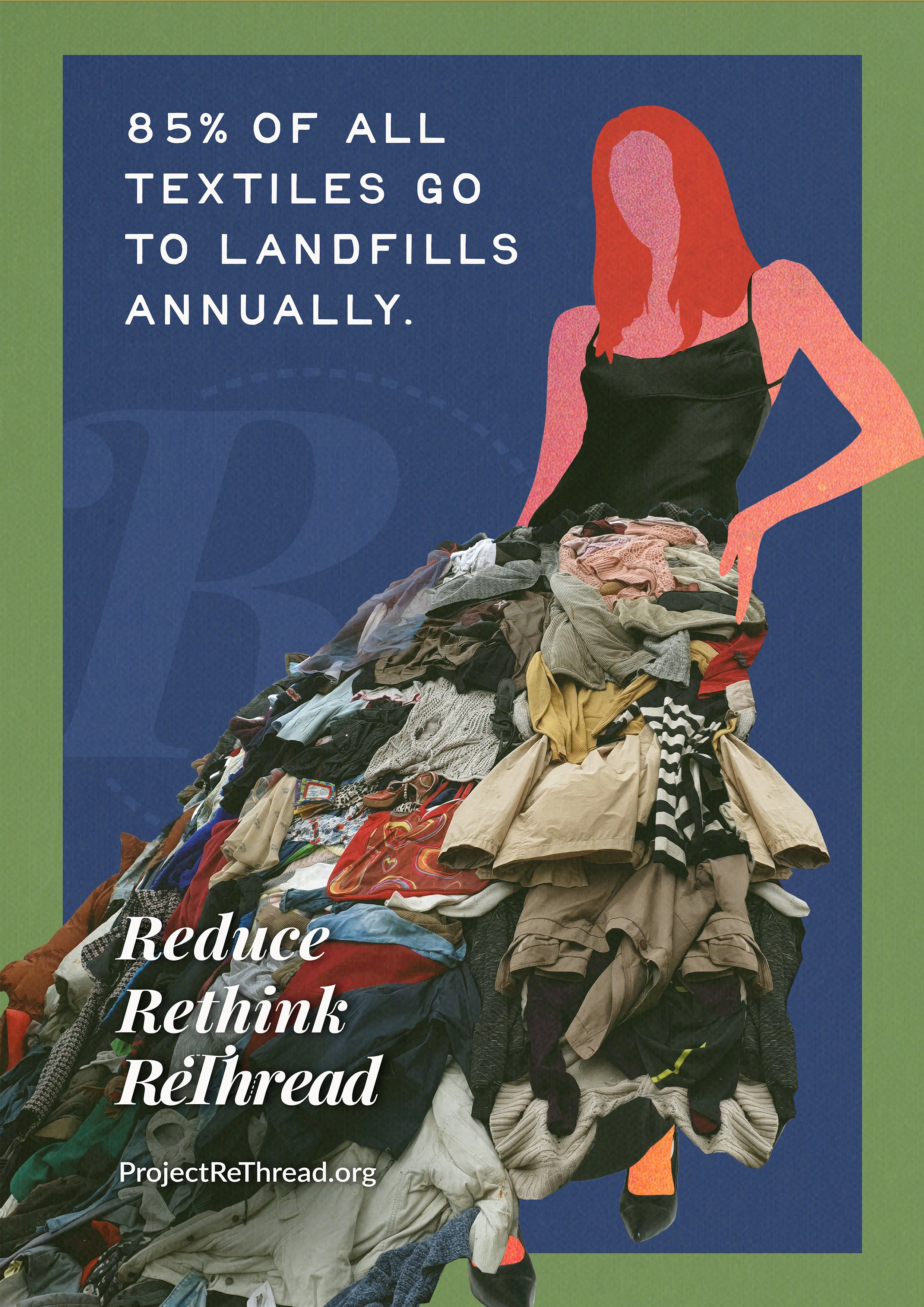
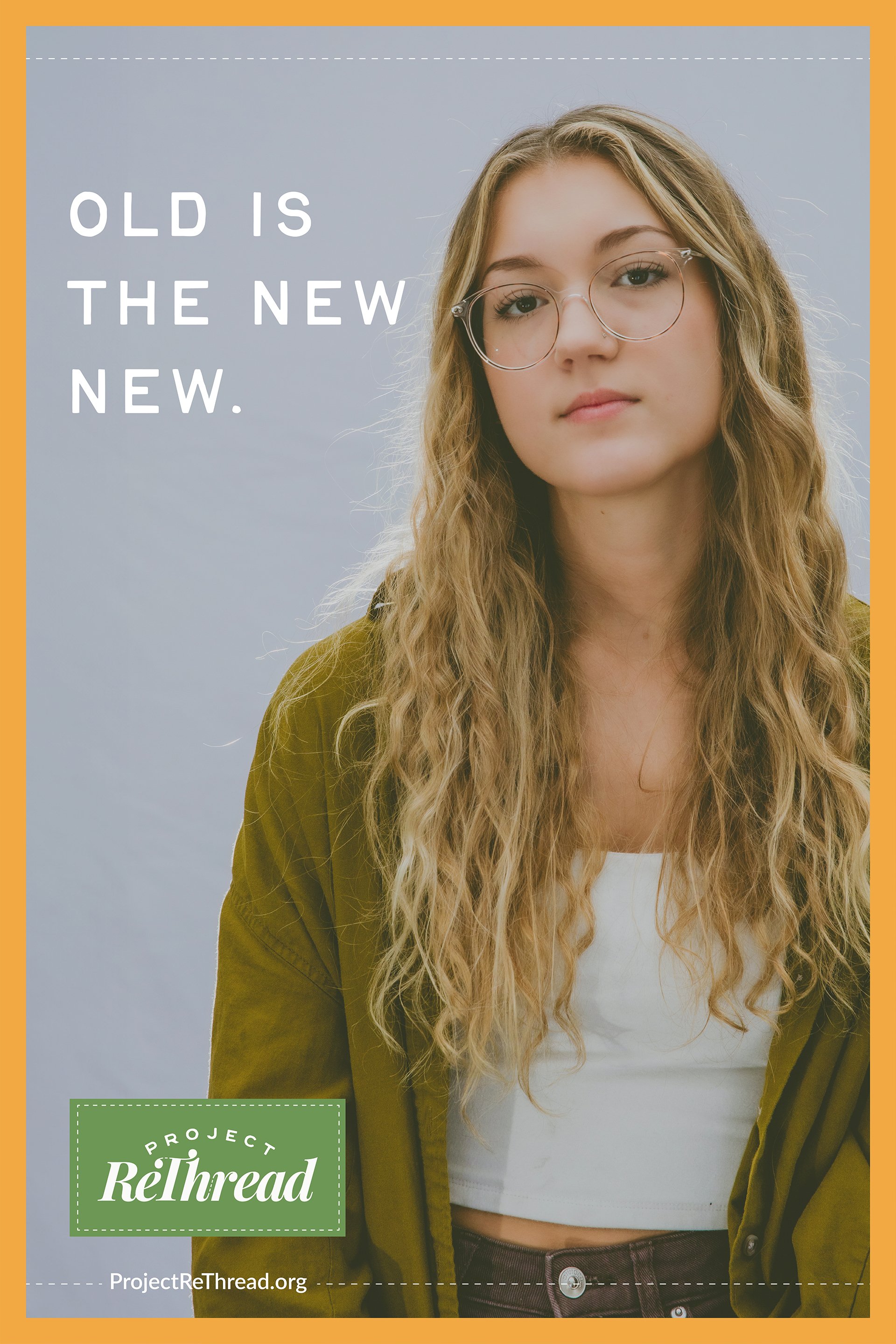
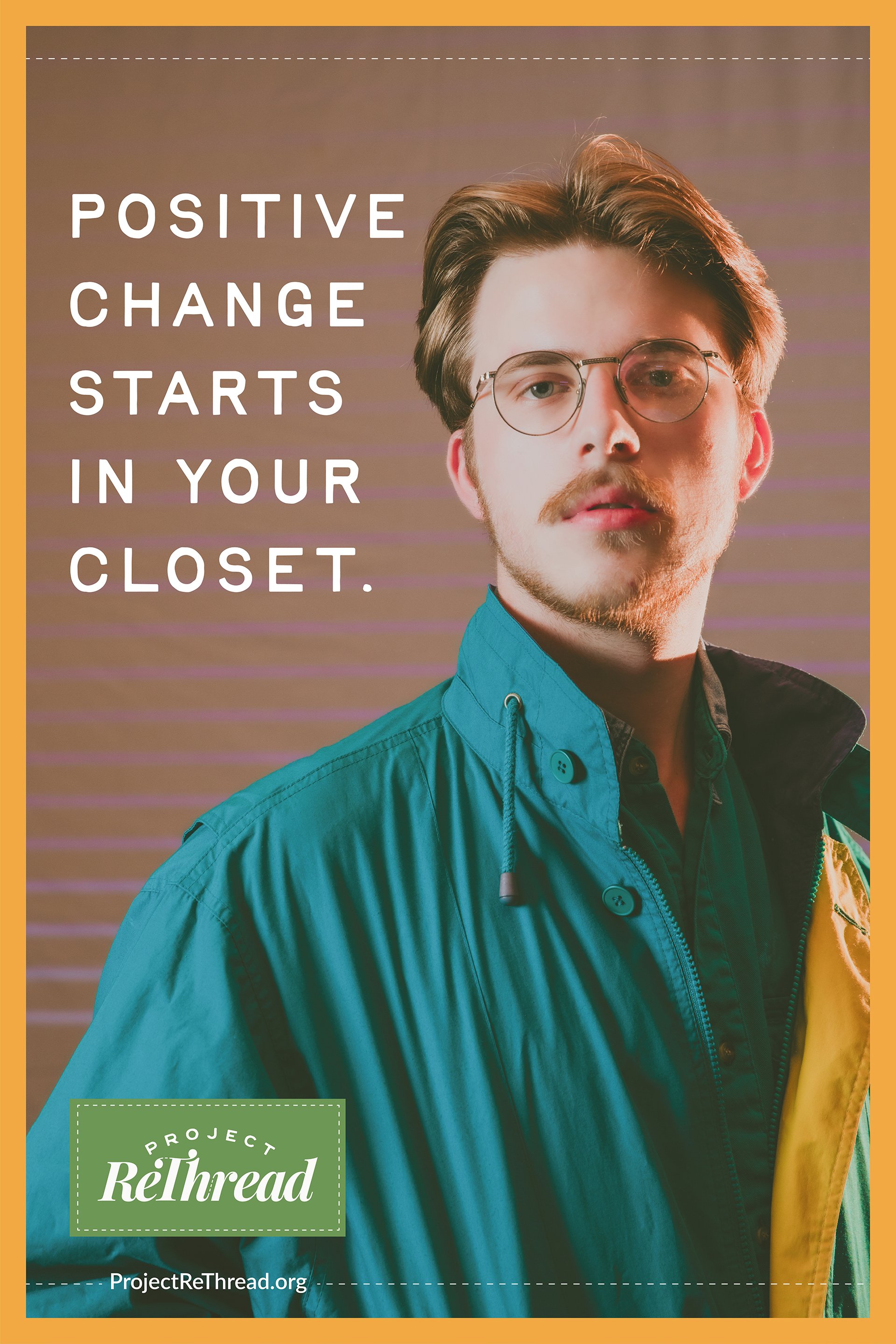


Billboards & Signs
Carrying over the themes from the posters, I designed several signs and billboards to showcase the flexibility of the brand image and messaging across multiple sizes and locations. The goal with these designs was bold graphics and clear messaging.

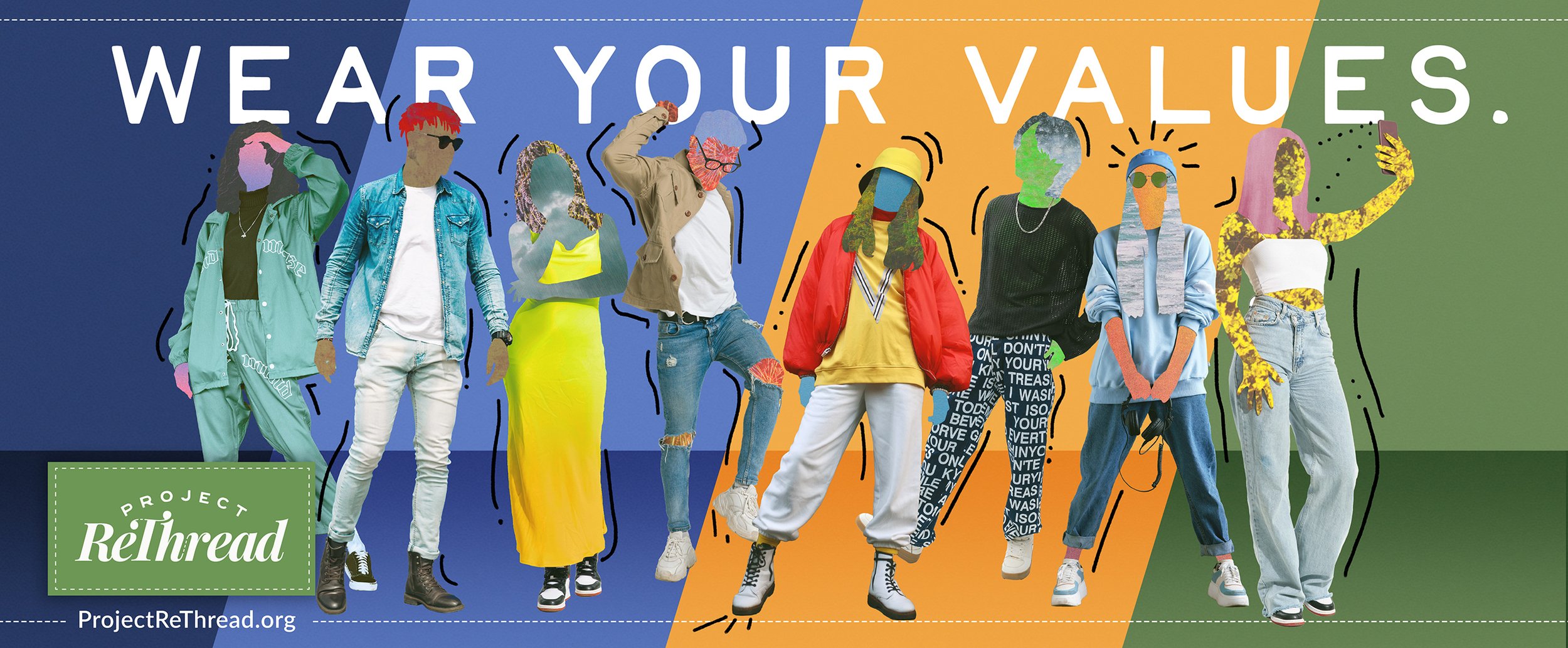

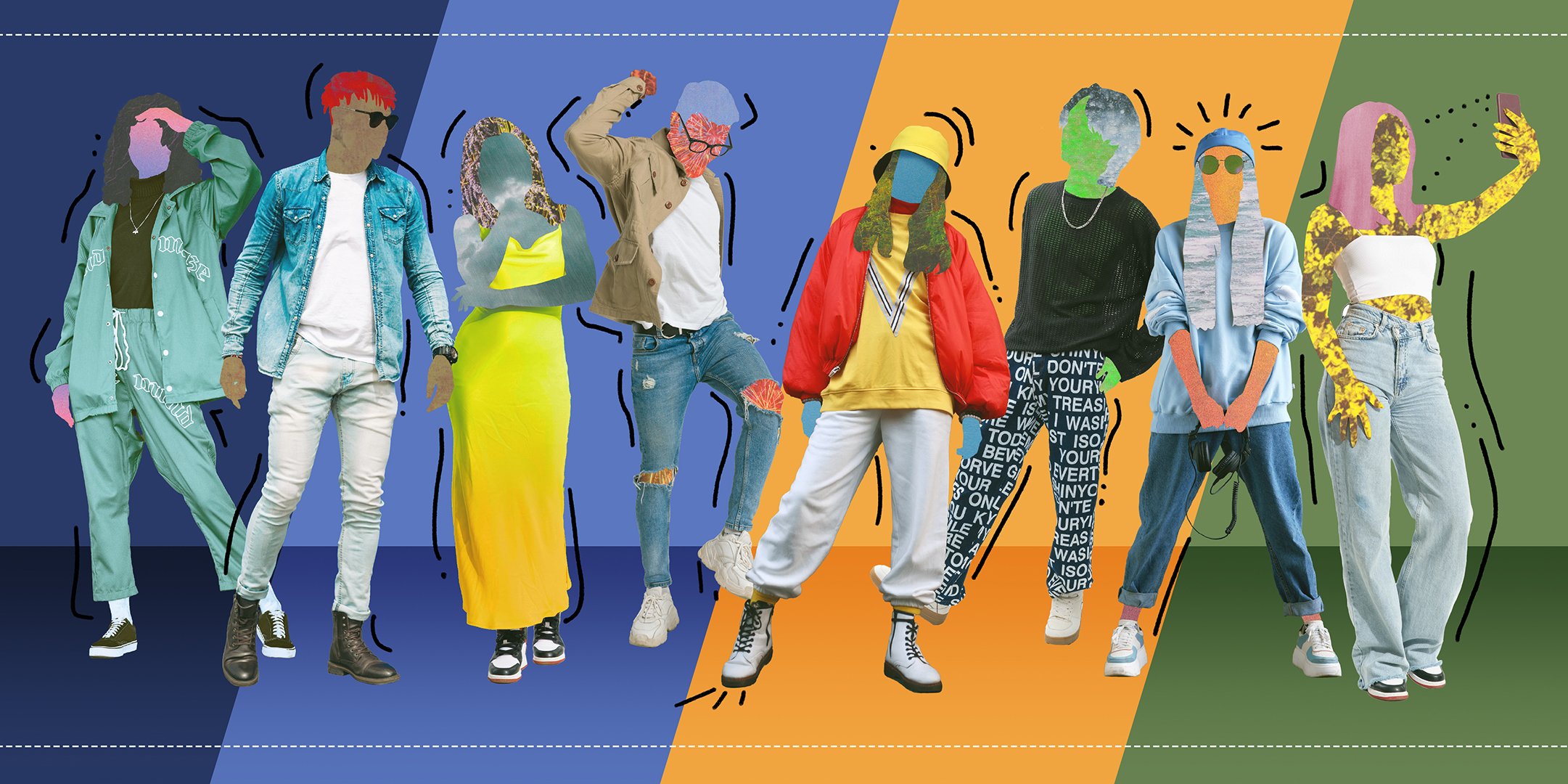

NON-TRADITIONAL ASSETS
Installation
The concept of an installation provides an opportunity to showcase the brand image and messaging in ways that are outside of standard digital and print mediums. In theory, installations would be displayed in a public space, preferably one with a lot of Gen Z traffic. This could be a college campus, shopping center, public forum, or transportation areas like subways or airports. The concept of this installation would include mannequins with bold fabric coverings, similar to the prints of the paper cut-outs in the collage composite model designs. The mannequins would be dressed in outfits created with sustainable or thrifted clothing. The backdrop of the display could be print or digital and would display the Project ReThread logo, simple messaging, and website.
Vehicle Wraps
Other non-traditional advertising could include things like vehicle wraps. This example is an idea of what a potential partnership could look like between Project ReThread and other sustainable-focused efforts, such as this hypothetical, all-electric fleet of buses. This shows how Project ReThread’s graphics and messaging can be expanded and blended with most any brand in collaborative efforts focused around sustainable action. Here, the message “Environmental change starts in your closet… and continues on the street,” highlights how you can make positive change with both your clothing and transportation choices. This is just one example, however, the collaborative possibilities are endless when considering all the sustainably-minded brands.
CONCLUSION
Research has shown that Gen Z is the leading consumer of Fast Fashion. This is due to a value-action gap created by a lack of knowledge and the accessibility and affordability of fast fashion.
According to Research, an Effective Solution Needs to:
Present alternatives that are affordable & accessible
Educate audiences about the environmental & social issues of fast fashion
Inspire viewers and convince them that their choices make a difference
The Design Solution for this Project:
Provides information and resources that direct viewers to accessible, affordable, and sustainable options.
Further educates audiences of fast fashion’s adverse effects through print and digital mediums.
Inspires viewers by the creation of inspirational posts, and by creating a framework for influencer leveraging through social media. Additionally, it has provided an opportunity for future partnerships with other sustainably-minded people or groups.
Submitted in Partial Fulfillment of the Requirements for the Degree of Master of Fine Arts in Graphic Design at Liberty University
The thesis presented here is an educational exercise completed by students in pursuit of their degree. The student, committee, and Liberty University make no guarantee (expressed or implied) about the completeness, accuracy, reliability, or suitability of the information presented. The views and opinions (personal, religious, philosophical, or political positions) found in this project are solely those of the student and do not necessarily reflect the views or opinions of the committee or Liberty University.
A Special Thanks to my MFA Thesis Committee, whose time and guidance greatly helped shape this project. I could not have done it without you.
Chair: Bri O’Neal, MFA • First Reader: Bill Dewhurst, MFA, MA • Second Reader & Thesis Advisor: Joshua Wilson, MFA, MFA • Editor: Kendra Gray


















